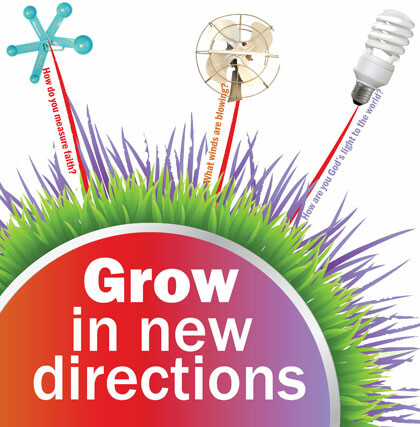
New worship gatherings grow congregations
 BY CHRISTINE KUMAR
BY CHRISTINE KUMAR
One of the best ways for a church to grow is to start new worship services, says Charles Arn, president of Church Growth, Inc. in Monrovia, Calif.
But this is not a paint-by-numbers experience, nor is it for the faint of heart.
Flexibility, curiosity and the ability to “throw away the box you’re supposed to think outside of” may be the key to success when creating vital new worship gatherings.
So, why start a new worship service? The Rev. Andy Lunt, Director of Congregational Development at the Baltimore-Washington Conference, shared some reasons at a “Starting New Worship Services” workshop last spring. Start a new service, he said,
1. To reach the unchurched,
2. To minister to more Christians,
3. To reach new kinds of people,
4. To help the congregation break out of normal life cycle,
5. To allow for change while retaining the familiar,
6. To activate inactive members.
7. Starting a new service is also a good idea when attending is declining, the surrounding community is growing or if your current attendance fills 80 to 100 percent of the seating capacity, which discourages new people from feeling comfortable.
Lunt said that it may NOT be a good time to begin a new worship service if:
+ The congregation’s top priority is “caring for each other;”
+ The lead pastor plans to leave within one year;
+ The only existing service averages fewer than 40 people;
+ The existing service attendance has plateaued for several years at 60 to 80 percent of capacity;
+ Everyone is doing it.
Eight out of 10 churches that have a proven system of starting new worship services will experience a measurable increase in: total worship attendance, total giving, number of conversions.
When beginning a new worship service, the Rev. Jim Ozier, Director of New Church Development and Congregational Transformation at the North Texas United Methodist Conference, suggests that pastors and church leaders should:
1. Discern how the new worship service, regardless of style and format, will reflect the culture of their church. If it doesn’t match the culture, it is unlikely to succeed.
2. Be clear about the reasons to start a new service and then develop strategies to match the reasons and know the where, when, how and who.
3. Involve a neutral third party in the discerning and planning stages. This might be a coach, consultant or a friend outside the congregation. Someone without an agenda should be involved in order to navigate through the sacred cows that will be brought up during the discussion like “Not that kind of music in my sanctuary” or ”we won’t be one church anymore.”
4. Try out video venues, which are becoming quite popular.
Arn believes that people want choices – in their cars, cereals, detergents, television programs and worship experiences. The more options you provide, the more people you will reach.
Ford offers seven lines of cars with a variety of color and interior options for each, he said. This insight is crucial for churches in today’s world of choices. Offering only one service at one time of day on one day a week with one style says to your community, “This is your choice: take it or leave it.” Guess which option most will choose?
According to Lunt, trying something different will:
+ Help congregations focus on those not yet there;
+ Challenge leaders to convey core messages in fresh ways;
+ Make it easier for people to invite neighbors and friends;
+ Provide choices for people who are used to them; and
+ Help activate some inactive members.
The Rev. William T. Chaney Jr., an Adventure Guide in the Western Region, suggests that before starting new worship services, reaching out to the community is vital. He offers several outreach strategies:
- Fishing Net Events – These are large gatherings and communitywide events that are designed to draw diverse crowds from the community. These activities include block parties and and other evangelism-focused, faith-sharing festivals.
- Fishing Bucket Events – These events are demographically targeted to have a specific impact on the ministry target group. They include parenting seminars, retirement seminars, health fairs, community and neighborhood town meetings.
- Fishing Pole Events – These are small gatherings that are designed to allow one-on-one conversations with those who are invited. Some examples are progressive dinners, dessert nights with the pastor and vision-casting sessions.
According to Chaney, pastors must cast a vision to reach the community, set time aside for community outreach and rely on one-on-one relationships, rather than focusing on marketing as you start a new worship service.
Christine Kumar is the Conference Associate for Congregational Development.

Login/Register to leave comment